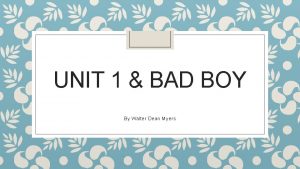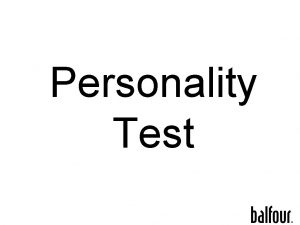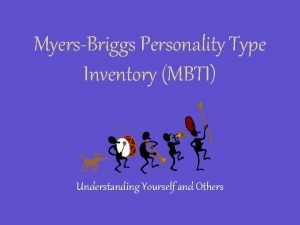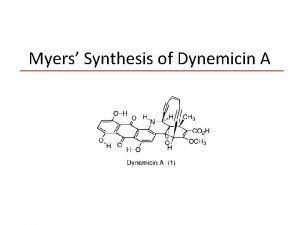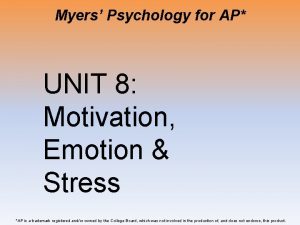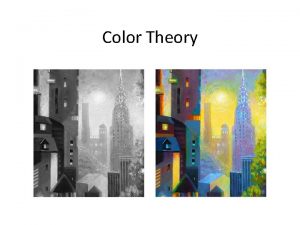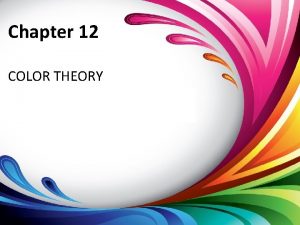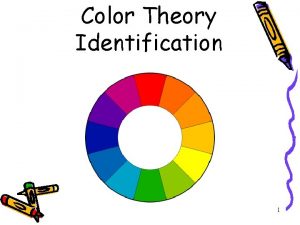Color Theory Lisa Myers What is Color Theory











- Slides: 11

Color Theory Lisa Myers

What is Color Theory? Quick definition: practical guidance regarding the effective use of color Three key pieces to understand in color theory: �Color wheel �Color schemes (how colors are used together); also called color harmony �Color psychology (or the meanings that colors convey and responses they elicit from individuals) Image from www. pelfusion. com

Color Wheel �Color Wheel contains primary colors (red, blue, and yellow); secondary colors (orange, green, and purple; created by mixing primary colors); and tertiary colors (blue-green, yellow-orange, etc. ; created by mixing a primary and secondary color) Image from www. pelfusion. com

Important Color Schemes �Monochromatic: different shades of one color (e. g. dark and light orange); simple and harmonious

Important Color Schemes cont �Complementary: colors located across from each other on the color wheel (e. g. blue and orange); provides strong contrast

Important Color Schemes cont �Analogous: colors located next to each other on the color wheel (e. g. orange and yellow); good for simple designs that don’t need strong contrast

Color Psychology �Colors have various meanings and associations in different cultures �In western culture, cool colors (blue, green, purple) can represent calmness, peacefulness, and trustworthiness; warm colors (red, orange, yellow) can represent energy, passion, cheerfulness, creativity �A stern, professional website likely draw on cool colors, whereas site wanting to convey a sense of fun or creativity would likely choose a warm color

Color Psychology cont More professional with blue and grey; wants you to trust them and use their services Design website; wants to convey creativity and suggest that designing with them can be fun

Color Psychology cont �Bright colors are good for children’s websites �Colors such as green, sky blue, brown, and yellow are often reminiscent of the earth and nature

Why Color Theory Matters Understanding color theory and having a good color scheme are key for achieving your goals in designing a website: �Chaotic or clashing colors look unprofessional and can hamper readability: University Mall Theatres (site uses too many bright colors with no apparent color scheme; text is often difficult to read against the background)

Why Color Theory Matters cont �Colors can trigger various emotions and other responses from individuals; designers should know how to wisely choose colors in order to increase chances of getting desired response from audience �Color can help draw attention to or show the relation of certain items on a webpage


